“A meal without wine is like a day without sunshine.”
– Jean-Antheleme Brillat-Savarin
Intro: Wine has a rich history dating back to around 6000 BC and is thought to have originated in areas now within the borders of Georgia and Iran. It’s an alcoholic beverage often made by fermenting crushed grapes using various types of yeast which consume the sugars found in the grapes and convert them into alcohol. There are hundreds of different types of wines from all over the world. The type of grape used in wine-making determines the variety of wine produced. Although other fruits such as apples and berries can also be fermented, the resultant wines are normally named after the fruit from which they are produced (for example, apple wine or elderberry wine) and are generically known as fruit wine or country wine.
Color of wine: The color comes from the skin of the grapes. The juice that comes from nearly every variety of grape when pressed is white or clear. This is true of red grapes as well. The color or pigments of red grapes are found in the skins of the grapes. In order to make a red wine from red grapes, it is necessary to leave the skins in contact with the juice during fermentation. When the skins are placed in the fermenting ‘must’, the pigments leech out of the skins and color the wine. When red grapes are pressed and the skins are kept out, the color of the wine remains white and is considered a ‘blanc de noirs’ (a white wine from red grapes).
Alcohol in wine (% by Vol): Alcoholic strength is the ethanol (the main product of fermentation) in wine. It is measured in percentage as opposed to proof, which is how alcohol is measured in hard liquor. In the U.S., if a label simply says “Table Wine” then the alcohol content is between 11% and 14%. In Europe the variance is between 8.5% and 14%. The dessert wine usually contains 14-20% alcohol, and Port wine around 20%.
Vintage Wine: A vintage wine is one made from grapes that were all, or primarily, grown 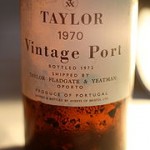 and harvested in a single specified year. Most countries allow a vintage wine to include a portion of wine that is not from the year denoted on the label. For example, in the United States and European Union, the requirement is 85%. The opposite of a vintage wine is a non-vintage wine, which is usually a blend from the produce of two or more years. This is a common practice for wine-makers seeking a consistent style of wine, year on year.
and harvested in a single specified year. Most countries allow a vintage wine to include a portion of wine that is not from the year denoted on the label. For example, in the United States and European Union, the requirement is 85%. The opposite of a vintage wine is a non-vintage wine, which is usually a blend from the produce of two or more years. This is a common practice for wine-makers seeking a consistent style of wine, year on year.
Dry Wine: Dry wine is the opposite of sweet wine. For cultures where wine is consumed 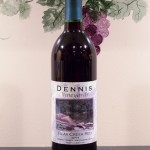 often, dry is the only wine used with meals. Sweet wine is used only as desserts wine. A wine is said to be dry when little or no sugar is left after the fermentation process. It is also said to have “fermented right out”.
often, dry is the only wine used with meals. Sweet wine is used only as desserts wine. A wine is said to be dry when little or no sugar is left after the fermentation process. It is also said to have “fermented right out”.
See the picture of ‘Bear Creek Red Dry Wine’ on the right.
TYPES OF WINE
Appetizer Wine
As the name suggests, appetizer wines are served as a cocktail or before the meal to 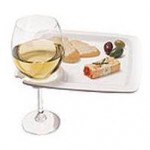 sharpen the appetite. These are generally soft, light-bodied wines that are simple and fruity and match up with most hors d’oeuvres.
sharpen the appetite. These are generally soft, light-bodied wines that are simple and fruity and match up with most hors d’oeuvres.
Examples: Righetti Amarone, Dry Sherry, Saracco Moscato, Chilled Dry White Vermouth
Red Wine
Red dinner wines are usually dry and rich, sometimes tart, always hearty. The best red wines today are coming from France, Australia, Chile and Italy. Red wine should be served 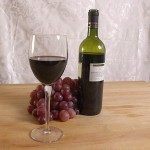 at room temperature (65 degree ideal) and must never be chilled. It is recommended that once you open the bottle, allow it to breathe for 30-60 minutes before serving. And also, once you open the bottle, you should finish it. Normally, a red wine bottle – once opened, doesn’t have shelf life of more than 1-2 days.
at room temperature (65 degree ideal) and must never be chilled. It is recommended that once you open the bottle, allow it to breathe for 30-60 minutes before serving. And also, once you open the bottle, you should finish it. Normally, a red wine bottle – once opened, doesn’t have shelf life of more than 1-2 days.
Examples (based on types / names of grapes): Merlot [Mehr-LOW], Cabernet Franc [Cah-burr-NAY Frahnk], Cabernet Sauvignon [Cah-burr-NAY Sow-vee-NYOH], Barbera [Bar-BEAR-ah], Carmenère [kar-men-nar], Malbec [mahl-BEHK], Pinot Noir [pee-noh NWAHR], Shiraz [SHEAR-oz], Syrah [See-RAH], Barbarossa [Bar-bar-Roh-sa], Pinotage [pee-noh TAHJ].
Shiraz with Dark Chocolates: Enjoy a bite first… then have a sip of Shiraz… followed by another piece of chocolate. Try it… it’s awesome!
White Wine
These are usually good for beginners as they often tend to like the sweet taste. White wines usually contain less alcohol than most reds. Many wine lovers may not be aware 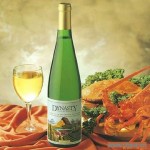 that Germany produces some of the most spectacular white wines in the world.
that Germany produces some of the most spectacular white wines in the world.
White wine should be served lightly chilled (around 55 degrees). Once opened, the bottle can be kept in the refrigerator for 3-4 days.
Examples (based on types / names of grapes): Chardonnay [Shar-dun-NAY], Sauvignon Blanc [SOH-veen-yown, blahnk], Chenin Blanc [SHEN-ihn, BLAHN], Riesling [REES-ling].
Sparkling Wine / Champagne
Sparkling wine is a wine with significant levels of carbon dioxide in it making it fizzy. The carbon dioxide may result from natural fermentation or as a result of carbon dioxide  injection. The classic example of a sparkling wine is Champagne, but many other examples are produced in other countries and regions. The generic Italian term for sparkling wine is Spumante, whereas in Germany it is known as Sekt. In some parts of the world, the words “champagne” or “spumante” are used as a synonym for sparkling wine, although laws in Europe and other countries reserve the word champagne for a specific type from the Champagne region of France. While the majority of sparkling wines are white or rosé, Australia, Italy and Moldova all have a sizable production of red sparkling wines. In Australia, these sparklers are often made from the Shiraz grape.
injection. The classic example of a sparkling wine is Champagne, but many other examples are produced in other countries and regions. The generic Italian term for sparkling wine is Spumante, whereas in Germany it is known as Sekt. In some parts of the world, the words “champagne” or “spumante” are used as a synonym for sparkling wine, although laws in Europe and other countries reserve the word champagne for a specific type from the Champagne region of France. While the majority of sparkling wines are white or rosé, Australia, Italy and Moldova all have a sizable production of red sparkling wines. In Australia, these sparklers are often made from the Shiraz grape.
Examples: Dry champagne (fruity and sweet), Brut champagne (very dry)
Desert Wine / Pudding Wine / Ice Wine
Dessert wines are sweet wines typically served with dessert. Despite the name, they are often best appreciated alone, or with fruit or bakery sweets. Heavier and sweeter than dinner wines, these can range from grossly sugary to crisp and refreshing.
Ice wines are very sweet but with lots of balancing acidity. Most wine laws require 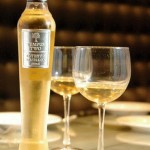 temperatures below at least −7 °C (19 °F) before the grapes for ice wine can be picked. Due to the low yield from frozen grapes, these are normally expensive. The most famous ice wines are German Eiswein and Canadian ice wine.
temperatures below at least −7 °C (19 °F) before the grapes for ice wine can be picked. Due to the low yield from frozen grapes, these are normally expensive. The most famous ice wines are German Eiswein and Canadian ice wine.
White dessert wines are generally served somewhat chilled, but can be easily served too cold. Red dessert wine are served at room temperature or slightly chilled.
Examples of dessert wine: Madeira and Sherry. Port wine is also served as dessert wine.
Port Wine
Port wine (also known as Porto or simply Port) is a Portuguese wine. It is produced from 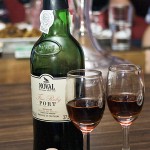 grapes grown and processed in the Douro region in Portugal. The wine produced is then fortified with the addition of a Brandy (distilled grape spirits) in order to stop the fermentation, leaving residual sugar in the wine, and to boost the alcohol content. It is typically a sweet red wine, but also comes in dry, semi-dry and white varieties. It is often served as a dessert wine.
grapes grown and processed in the Douro region in Portugal. The wine produced is then fortified with the addition of a Brandy (distilled grape spirits) in order to stop the fermentation, leaving residual sugar in the wine, and to boost the alcohol content. It is typically a sweet red wine, but also comes in dry, semi-dry and white varieties. It is often served as a dessert wine.
Wines in the style of port are produced around the world in several countries, but under European Union guidelines, only the product from Portugal may be labeled as Port.
Rosé Wine / Blush Wine
A Rosé (French: rosé, ‘pinkish’) or Blush (in America) wine has some of the color typical of a red wine, but only enough to turn it pink. The pink color can range from a pale orange 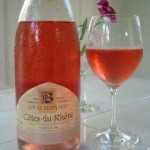 to a vivid near-purple, depending on the grapes and wine making techniques. Such wines are generally produced from red grapes by quickly removing the skins from the juice after the grapes are pressed. This technique stops the transfer of color from the dark pigments in the grape’s skin, and the wine continues its processing as for white wine. Rosé wine can also be produced as a by-product of red wine fermentation using a technique known as Saignée, or bleeding the vats. Rosé wines are more often produced by adding a specific amount of red wine to an already finished white wine. Rosé wine is served chilled like white wine.
to a vivid near-purple, depending on the grapes and wine making techniques. Such wines are generally produced from red grapes by quickly removing the skins from the juice after the grapes are pressed. This technique stops the transfer of color from the dark pigments in the grape’s skin, and the wine continues its processing as for white wine. Rosé wine can also be produced as a by-product of red wine fermentation using a technique known as Saignée, or bleeding the vats. Rosé wines are more often produced by adding a specific amount of red wine to an already finished white wine. Rosé wine is served chilled like white wine.
Example: Beaujolais Nouveau Nouveau, Zinfandel, Blush, Chablis.
HOW TO STORE WINE
Wines should be kept in a cool, dark location – away from direct sunlight and heat. A wine cellar is a storage room for wine in bottles or barrels. In an active wine cellar, important factors such as temperature and humidity are maintained by a climate control system. In contrast, passive wine cellars are not climate-controlled, and are usually built underground to reduce temperature swings. An above-ground wine cellar is often called a wine room, while a small wine cellar (less than 500 bottles) is sometimes termed a wine closet. These days small wine refrigerators are available within a price range of US$200 – 500, which keep everything at a nice, cool 62 degrees.
|
Wine Cellar |
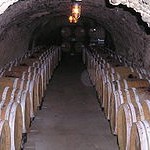
Underground Wine Cellar |
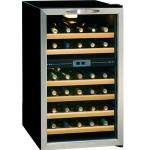
Wine Cooler |
Wine Rack |
HOW TO SERVE WINE
Selection of a particular wine glass for a wine style is important, as the glass shape can influence its perception. Wine glass is a type of glass stemware which is used to drink and taste wine. It is generally composed of three parts: the bowl, stem, and foot. Usually, red wine glasses have a larger settling area and mouth for breathing purposes. You should fill wine glasses between one-third and two-thirds full.
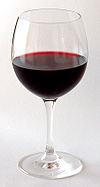 Red Wine Glass Red Wine Glass |
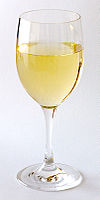 White Wine Glass White Wine Glass |
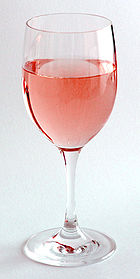 Rosé Wine Glass Rosé Wine Glass |
HOW TO DRINK WINE
Pour yourself a healthy glass, and let it stand or “breathe” for a moment – to allow the complexity of the flavors to come through. Before drinking your wine, grab the glass by the stem and gently swirl it in a circular motion (this mixes up the flavors and tannins of the wine and encourages more of its flavors and aromas to come out). Deeply inhale the scent of your wine as a good portion of what we perceive as “taste” is really determined by smell. After smelling, remove the glass from your nose slightly and get a whiff of fresh-air (this generally clears your nasal palate and prepares you to enjoy the taste of the wine). Finally, you are ready to drink. Take a sip and hold it in your mouth for a moment, noticing the different flavors you detect. Then, swallow and enjoy. Again, try to recognize aromas and flavors.
THE CHOICE BETWEEN WHITE AND RED WINES
One of the oldest rules in fine dining is that you should attempt to harmonize your choice of food and drink. If you are going to be eating something delicate with subtle tastes you should avoid drinking something with a strong flavor that will overshadow the food. Conversely, a hearty meal will often be best complimented by a strong wine with flavor of its own. White wines tend to go best with fish and white meats, like chicken and pork; red wines go best with red meat and red sauces.
However, there is no hard and fast rule as such. There are many people who always love to have a particular wine regardless of what they are eating. So, it is also a matter of personal taste and preference. But one thing is certainly recommended that if you’re ordering at a restaurant, you should stick to reds or whites only. The rosé wine (chilled) is more to be enjoyed at a picnic on a hot day.
USEFUL LINKS ON THE WEB
- Wikipedia
- Wine and Health
- 101 Favorite Wine Quotes
- How to Read a Wine Label
- Wine Glasses
- Other Wine Accessories (Decanters, Openers & Corkscrews, Wine Labels, Cellars, Coolers etc.)
- The Wine Society of India – Guide to Wine Tasting
- Wine Shopping at Four Seasons

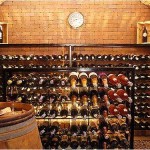
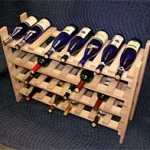


Hello There. I discovered your weblog using msn. That is a really smartly written article. Thanks for the post.
I was suggested this blog by my cousin. You are amazing! Thanks!
This is so well written and made simple. Thanks!
Hi am looking for good Port wine for trading in India, please forward any details to samerseth099@gmail.com